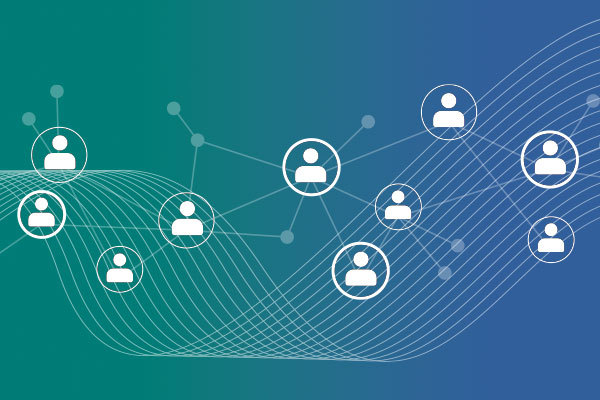How to Power Intelligent Subscription Pricing
By Zilliant
Oct 19, 2021
Table of Contents
As B2B companies seek additional revenue streams to stay competitive in today’s business landscape, many are shifting to subscription-based pricing models. There are a few reasons why B2B companies would undertake this shift, including a built-in foundation of customers in which new wins or growth equates to incremental revenue, higher customer lifetime value, and higher valuations in the marketplace.
“Whether you’re a start-up company or a publicly held company, valuations tend to be 10 times higher for subscription-based revenue than for traditional transaction-based revenue,” said Impact Pricing’s Chief Pricing Educator Mark Stiving, Ph.D. on episode 37 of the B2B Reimagined Podcast.
But for many B2B companies, adopting a subscription pricing model is a major change, especially for businesses that are used to more traditional revenue models.
Subscription Pricing Challenges
There are a number of challenges that might arise for B2B companies looking to adopt and effectively execute a subscription pricing model. The biggest of these challenges is a delayed cash flow. For example, if a sales rep wins a million-dollar contract as a subscription, then the business might only make $30,000 the first month. Companies that are looking to shift to a subscription model need to think about easing into a subscription model rather than a sudden overnight shift and share some of the upfront traditional revenue with the subscription side.
The shift to subscription pricing is also challenging from a cultural perspective because B2B companies need to suddenly focus on if they are truly delivering value to customers. For a subscription company, the Customer Success department is critical. Unlike customer support or technical support in traditional companies that respond to issues and problems, the Customer Success department in a subscription company is proactive in keeping track of how a customer engages with a product and strives to ensure maximum value is derived from using a product.
Finally, pricing and billing management for subscriptions is another major issue because it’s vastly different than the traditional model of receiving and invoicing based on a purchase order. If a subscriber does not pay their bill, then there needs to be a solidified process for how to respond to a missed payment that aligns to the reason (i.e. purposeful missed payment versus an expired credit card). Alternatively, if a customer wants to upgrade its subscription, there needs to be a system in place to easily handle the change in price. If there is a negotiated price, which is seen often in B2B, there is the possibility of every single customer being at a different price point. For dealing with a vast number of negotiated prices, a robust system that leverages automation is necessary to execute effectively and not cause problems in the marketplace.
How Purpose-Built Software Helps Subscription Businesses Win, Keep and Grow Customers
Zilliant’s comprehensive approach to even the most confounding commercial challenges enables us to provide our customers with insights and guidance for each of the three subscription revenue buckets – acquisition, retention and expansion.
We will look at these one-by-one to illustrate how the flexible Zilliant platform drives value for each subscription selling scenario.
Acquisition
For subscription businesses with a significant number of customers and wide product variety, setting prices to maximize new sales while achieving profitability goals is a distinct challenge. Manual techniques and even many pricing solutions fall short in consistently producing a rational list price, let alone discount-from-list strategies that can account for each customer situation.
A major reason for this is the lack of a traditional cost basis that can act as a reference. Subscription pricing teams are usually flying blind when setting price, and often sales teams are granted autonomy when it comes to “gutfeel” discounting. The first step toward more rational price-setting is identifying and normalizing a variable in lieu of cost data.
Picking the right variable depends on the available transaction data a subscription business possesses. For example, one large subscription company that works with Zilliant uses its historic discount-from-list data as input in the Zilliant model, which generates a discount envelope for its new subscriptions. Because, like most B2B companies, it has a wealth of clean transaction history data, Zilliant pricing solutions can analyze its discount history at scale in order to calculate Start/Target/Floor recommendations for new business.
With Zilliant Price Manager™, the arduous tasks of aggregating and manipulating transaction data are made easy. The solution gives pricing teams the ability to quickly update list prices and set rules to produce a consistent discount envelope that can then be delivered seamlessly to field and inside sellers.
Typically, subscription businesses gain quick financial wins and an enhanced workflow from Price Manager, which can also serve as the new system of record for pricing. Companies can then further capitalize on the improved pricing by using Zilliant Price IQ®. The industry-leading price optimization solution helps subscription businesses measure price elasticity, predict the impact of different revenue-versus-profit strategies, and incorporate external data sources (like third-party or competitive data) when calculating list, matrix and customer-specific prices.
Retention
Subscription businesses make or miss their financial targets based on how well they retain customers. In a recurring revenue model, the operative word of course is “recurring.” However, simply retaining a customer for a new term is not in and of itself a home run. A healthy subscription company regularly executes price increases upon renewal. This is a delicate balance, to be sure, as too aggressive an increase strategy risks customer defection. Plus, the more customers in the portfolio the harder it is to dial in the right increase for each situation. Often, overly taxed sales teams skimp on this important step, reasoning that so long as the customer is retained, the job is done well enough.
There is a better way to approach the renewal cycle. Using the pricing tools described above to optimize discount strategies for each unique customer and manage renewal price decisions in an automated fashion, companies can strike the right retention-increase balance.
The way this is commonly done is through a combination of science and rules. Price IQ intakes customer historical data and its data science engine generates a range of price recommendations (i.e. a Start/Target/Floor deal envelope) for each product/customer combination. Then, Price Manager enables pricing teams to dial-in where each product/customer price should be based on the customer’s current position within the deal envelope.
For instance, if a customer was paying below the floor historically, the system will recommend a price increase to floor level; if they paid somewhere in between floor and target, then it will recommend an increase to target; and so on. Guardrails on price increases are also important to define, such as a rule that says a single year increase can never be greater than 5%. This keeps price moving in the right direction while preventing an excessive jump year-over-year that would unnecessarily risk defection.
Expansion
Now that a customer has come on board and there’s a plan in place to renew the subscription at a healthy price increase, we enter the final frontier. How does a company expand a customer’s usage across products or within a given product configuration? This revenue bucket assumes that a company has a multitude of products to offer, or that an increase in “quantity” (i.e. number of employees or some other volume usage metric that is tied to price) can lead to expanded use of a landed product.
The answer lies in actionable data science-driven insights. Consider a software subscription provider that has thousands of customers. With a predictive sales analytics engine like Zilliant Sales IQ™, it’s possible to create clusters of customers that share an affinity, such as annual revenue, employee count, annual spend, industry, use case, et cetera.
Within those clusters, the system can identify patterns and generate insights like, “Customers a, b and c don’t currently subscribe to product x, yet all other customers in their cluster do.” That’s valuable information for a sales rep to know. A growth action can be set up in Zilliant Campaign Manager™ to automate the delivery of these insights to sales or customer success reps, complete with a talk track they can use to pitch the upsell/cross-sell opportunity with maximum impact. Campaign Manager’s closed-loop tracking mechanism provides a snapshot at any given point in time of how a campaign is performing and whether the sales team is adopting an action.
Just as with the first two revenue buckets, Zilliant pricing solutions can be applied to appropriately calculate and manage prices for these expansion opportunities, based on all relevant business factors.
Conclusion
The shift from a traditional revenue model to a subscription pricing model can offer many challenges for B2B companies. Zilliant’s purpose-built software helps ensure a more seamless transition to a subscription model for B2B businesses by providing insights and guidance to win, keep and grow customers.
Contact Zilliant today to learn more about powering intelligent subscription pricing in your business.



